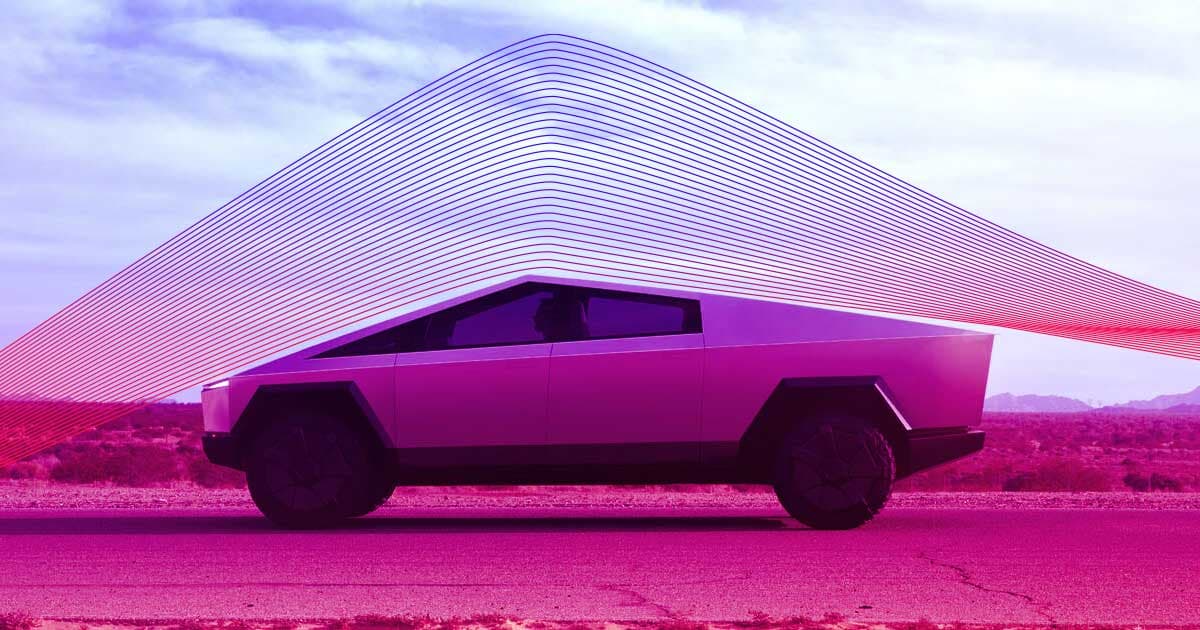On Saturday, Tesla CEO Elon Musk tweeted that "with extreme effort," the company's controversial new pickup truck could hit an extremely low drag coefficient — a quantifier often used to denote air resistance — that'd be "insane for a truck."
In his tweet, Musk claimed the Cybertruck could reach a drag coefficient of 0.3, making it more aerodynamic than the Ram 1500, the most aerodynamic model in the high capacity truck market in 2019, which has a coefficient of around 0.36, according to CNET. Tesla's Model 3, for comparison, is far more aerodynamic with a coefficient of just 0.23.
Aerodynamics are extremely important in electric vehicles, because air resistance can heavily impact the number of miles you can squeeze out of a battery pack — particularly when you're battling other forces such as pulling a massive trailer or driving with thousands of pounds of lumber in the bed.
Musk's tweet was in response to an investigation by aerospace engineer Justin Martin, who found that the truck's unusual shape mostly only caused turbulence at the peak of the windshield and, as expected, behind the vehicle.
Since Martin didn't know the shape of the fenders and wheel wells, he decided not to estimate a drag coefficient, as Interesting Engineering points out.
"While it may occur to be happenstance that the [aerodynamics turned] out quite well, I believe this was actually the result of very clever design," wrote Martin in an Instagram caption. "I won't quote a drag coefficient, as I [don't] want to put words in anyone's mouth, but I will place money on it being much lower than most sports cars (due to down force), and nearly any (1/2 ton) truck period."
Musk also noted that "laminar air flow due to a completely smooth bottom is underappreciated" in a follow up tweet, referring to the fact that many electric vehicles, Tesla's included, have an almost completely flat bottom thanks to their battery packs. Conventional pickup trucks have complex underbodies, including axles, driveshafts, and other components sticking out, creating air resistance.
But not everybody agrees with Martin's conclusion. Most of these fluid dynamics simulations rely on assumptions. Wheel wells, bumpers, and side view mirrors — which are still legally mandated in most of the U.S. but were lacking in the model Tesla showed off — could drastically change the results once the final consumer model rolls off the line two years from now.
Drag coefficients also don't provide a complete picture of how efficiently an electric vehicle will use available power.
"The drag coefficient as a concept is useful, but it is only one point of reference," professor of environmental fluid mechanics at the University of Birmingham Chris Baker told Inverse last week. "It says nothing about how drag varies with small cross winds, how the vehicle handles in cross winds, what the overall energy consumption is."
Other aspects such as regenerative breaking, and the gearing and efficiency of the motors used will affect the range as well. And that's without mentioning the Cybertruck's stainless steel exoskeleton, which will likely make it considerably heavier than other cars in the same segment.
READ MORE: The Tesla Cybertruck could be insanely aerodynamic, Musk says [CNET]
Share This Article
